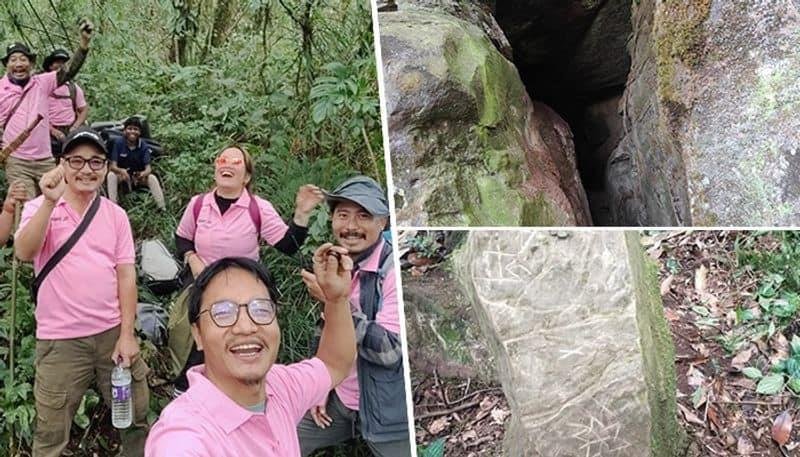A group of 27 trekkers, led by Tagit Sorang, an experienced mountaineer who has conquered Everest, recently stumbled upon a fascinating discovery near the Arunachal-Myanmar border. While traversing the hills of Tirap district in the frontier state, the team came across a stone cave located at the 2,119-meter-high ‘Longpongka’ point. This accidental find revealed a historical secret – the cave served as a transit camp for Allied Forces during World War II, strategically positioned to hinder the advancement of the Japanese army.
On a mission against drugs, the trekkers not only explored the cave but also documented it with photographs and gathered details about the site the following day. Local residents pointed out circular symbols, English abbreviations, and numerical carvings on stones near the cave, serving as significant markers of the transit camp.
According to accounts from the locals, the Allied Forces utilized this strategic location to counter the Japanese soldiers’ progress from Burma (now Myanmar) into vast areas of the North-East Frontier Agency, which is present-day Arunachal Pradesh. After the war, the site was abandoned and remained concealed from the outside world.
Khunwang Khusia, a retired forester and a native of Thinsa village, part of the trekking team, explained that the hilltop, locally known as ‘Silombhu,’ was utilized by the Allied Forces to store ration and equipment dispatched from Assam. The residents believe that the cave’s massive rocks provided secure shelter, as the sturdy structure was impervious to enemy bullets. Despite their efforts, the trekkers couldn’t reach the cave’s endpoint due to its narrow opening. Additionally, reports suggest that the porters from neighboring villages, who used to transport defense supplies, have since passed away.
Rigio Tabam, the district tourism officer for Tirap, shed light on the significant role played by able-bodied males from Tutsa and Nocte tribes. They carried ration, arms, and ammunition from Dilighat in Assam to Longpongka and then further to the Myanmar border, preventing Japanese soldiers from opening a new front toward the North-East Frontier Agency.
The trek, covering a distance of 7 km and taking three hours to traverse from Thinsa village, offered the trekkers a unique and uncharted experience as they journeyed through high hills, trees, and giant rocks. This unexpected historical discovery is bound to pique curiosity, as it harbors hidden remnants of World War II in the remote hills of Arunachal Pradesh.
Book Paris Trip
Paris sightseeing
Book Paris activities
Louvre museum paris
Paris limousine rental
Rolls Royce Paris
Eiffel Tower Paris
Airport Transfer Paris
Book Paris Taxi
Seine River Cruise
Wine Tasting Paris
Paris luxury hotels
Switzerland luxury hotels
Europe Car rental
Europe coach rental
Paris Limousine
Dior Paris
Beauvais Airport transfer
